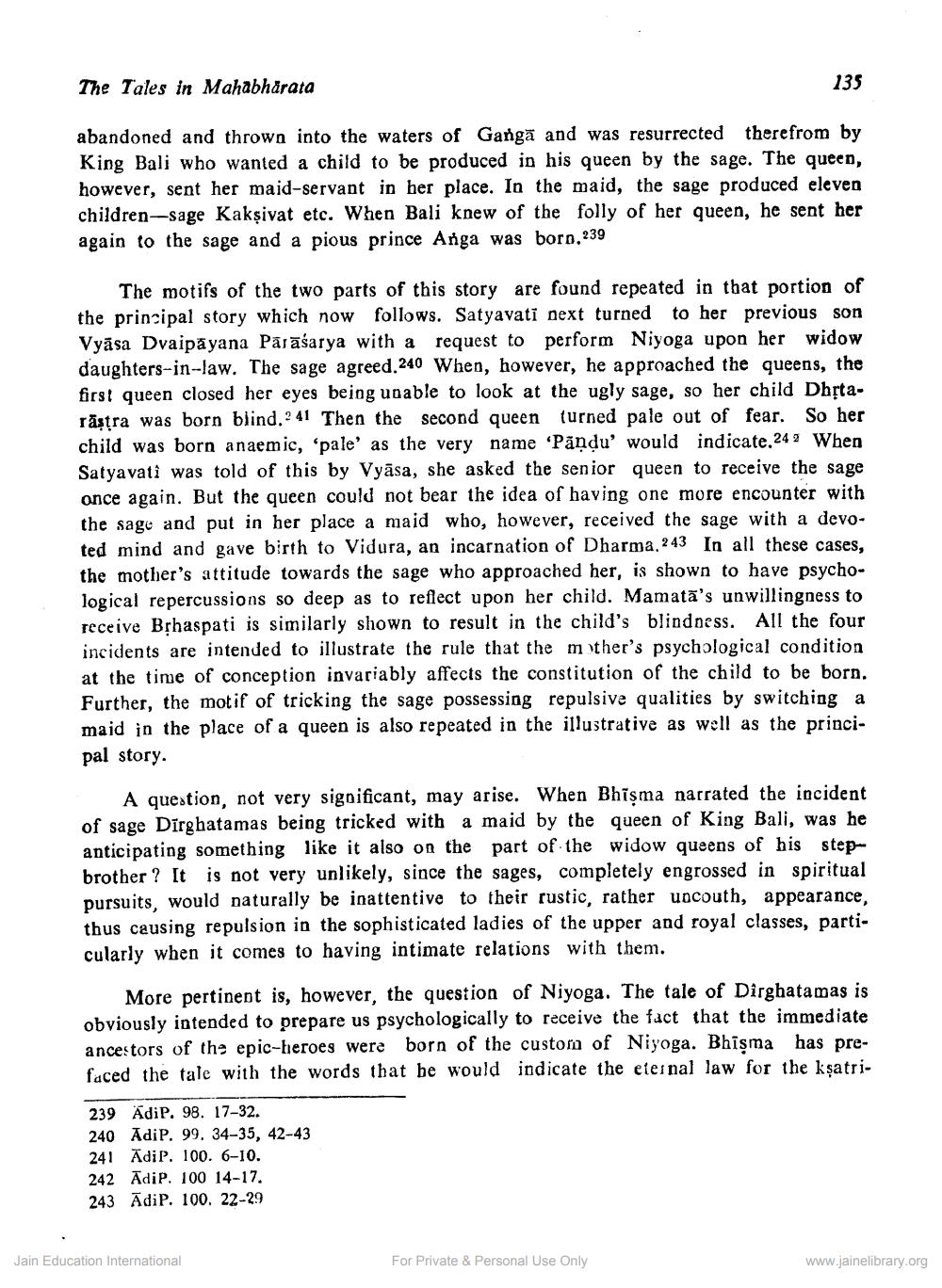________________
The Tales in Mahabharata
135
abandoned and thrown into the waters of Ganga and was resurrected therefrom by King Bali who wanted a child to be produced in his queen by the sage. The queen, however, sent her maid-servant in her place. In the maid, the sage produced eleven children-sage Kaksivat etc. When Bali knew of the folly of her queen, he sent her again to the sage and a pious prince Anga was borp.239
The motifs of the two parts of this story are found repeated in that portion of the principal story which now follows. Satyavati next turned to her previous son Vyāsa Dvaipāyana Pārāśarya with a request to perform Niyoga upon her widow daughters-in-law. The sage agreed.240 When, however, he approached the queens, the first queen closed her eyes being unable to look at the ugly sage, so her child Dhịtarästra was born blind. 2 41 Then the second queen turned pale out of fear. So her child was born anaemic, 'pale' as the very name 'Pandu' would indicate.24 9 When Satyavati was told of this by Vyāsa, she asked the senior queen to receive the sage once again. But the queen could not bear the idea of having one more encounter with the sage and put in her place a maid who, however, received the sage with a devoted mind and gave birth to Vidura, an incarnation of Dharma, 243 In all these cases, the mother's attitude towards the sage who approached her, is shown to have psychological repercussions so deep as to reflect upon her child. Mamatā's unwillingness to receive Brhaspati is similarly shown to result in the child's blindness. All the four incidents are intended to illustrate the rule that the mother's psychological condition at the time of conception invariably affects the constitution of the child to be born. Further, the motif of tricking the sage possessing repulsive qualities by switching a maid in the place of a queen is also repeated in the illustrative as well as the principal story.
A question, not very significant, may arise. When Bhişma narrated the incident of sage Dirghatamas being tricked with a maid by the queen of King Bali, was he anticipating something like it also on the part of the widow queens of his stepbrother? It is not very unlikely, since the sages, completely engrossed in spiritual pursuits, would naturally be inattentive to their rustic, rather uncouth, appearance, thus causing repulsion in the sophisticated ladies of the upper and royal classes, particularly when it comes to having intimate relations with them.
More pertinent is, however, the question of Niyoga. The tale of Dirghatamas is obviously intended to prepare us psychologically to receive the fact that the immediate ancestors of the epic-heroes were born of the custom of Niyoga. Bhisma has prefaced the tale with the words that he would indicate the eternal law for the ksatri
239 Adip. 98. 17-32. 240 Adip. 99. 34-35, 42-43 241 AdiP. 100. 6-10. 242 AdiP. 100 14-17. 243 AdiP. 100. 22-29
Jain Education International
For Private & Personal Use Only
www.jainelibrary.org




